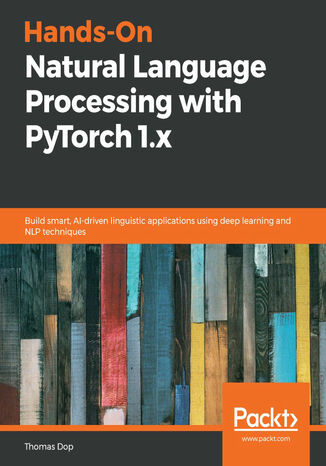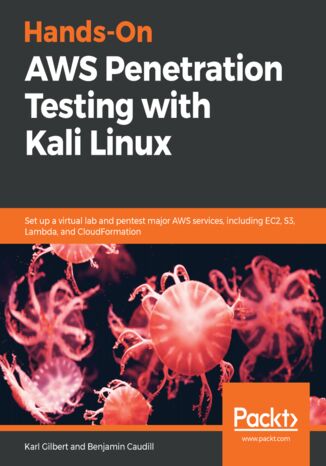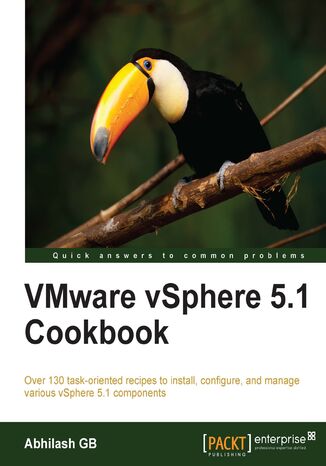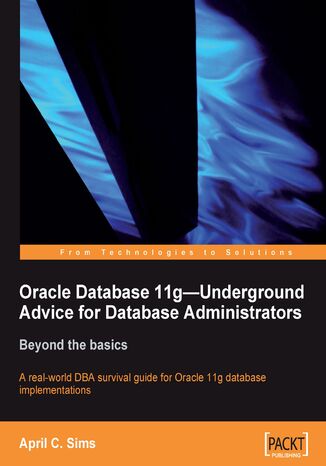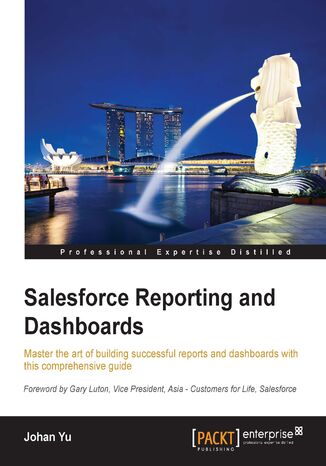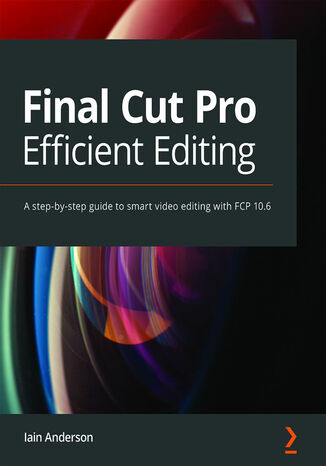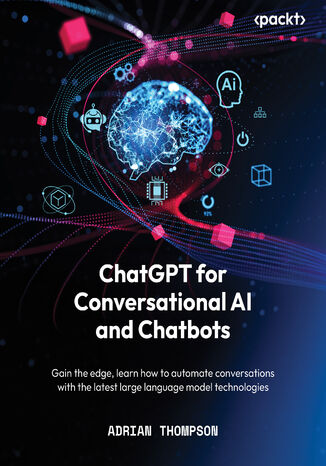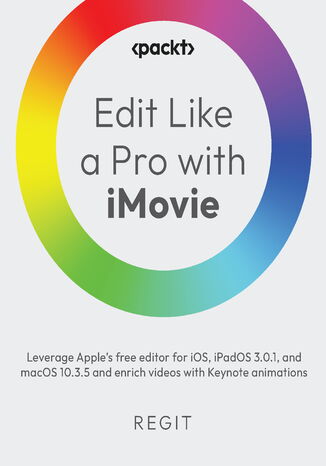Kategorien
-
- Bitcoin
- Geschäftsfrau
- Coaching
- Controlling
- E-Business
- Ökonomie
- Finanzen
- Börse und Investitionen
- Persönliche Kompetenzen
- Computer im Büro
- Kommunikation und Verhandlungen
- Kleines Unternehmen
- Marketing
- Motivation
- Multimedia-Training
- Immobilien
- Überzeugung und NLP
- Steuern
- Sozialpolitik
- Handbȕcher
- Präsentationen
- Führung
- Public Relation
- Berichte, Analysen
- Geheimnis
- Social Media
- Verkauf
- Start-up
- Ihre Karriere
- Management
- Projektmanagement
- Personal (HR)
-
- Architektura i wnętrza
- Sicherheit und Gesundheit am Arbeitsplatz
- Biznes i Ekonomia
- Haus und Garten
- E-Business
- Ekonomia i finanse
- Esoterik
- Finanzen
- Persönliche Finanzen
- Unternehmen
- Fotografie
- Informatik
- HR und Gehaltsabrechnung
- Frauen
- Computer, Excel
- Buchhaltung
- Kultur und Literatur
- Wissenschaftlich und akademisch
- Umweltschutz
- meinungsbildend
- Bildung
- Steuern
- Reisen
- Psychologie
- Religion
- Landwirtschaft
- Buch- und Pressemarkt
- Transport und Spedition
- Gesundheit und Schönheit
-
- Office-Programme
- Datenbank
- Bioinformatik
- IT Branche
- CAD/CAM
- Digital Lifestyle
- DTP
- Elektronik
- Digitale Fotografie
- Computergrafik
- Spiele
- Hacking
- Hardware
- IT w ekonomii
- Wissenschaftliche Pakete
- Schulbücher
- Computergrundlagen
- Programmierung
- Mobile-Programmierung
- Internet-Server
- Computernetzwerke
- Start-up
- Betriebssysteme
- Künstliche Inteligenz
- Technik für Kinder
- Webmaster
-
- Anthologien
- Ballade
- Biografien und Autobiografien
- Für Erwachsene
- Drama
- Tagebücher, Memoiren, Briefe
- Epos
- Essay
- Science Fiction
- Felietonys
- Fiktion
- Humor, Satire
- Andere
- Klassisch
- Krimi
- Sachbücher
- Belletristik
- Mity i legendy
- Nobelpreisträger
- Kurzgeschichten
- Gesellschaftlich
- Okultyzm i magia
- Erzählung
- Erinnerungen
- Reisen
- Gedicht
- Poesie
- Politik
- Populärwissenschaftlich
- Roman
- Historischer Roman
- Prosa
- Abenteuer
- Journalismus
- Reportage
- Romans i literatura obyczajowa
- Sensation
- Thriller, Horror
- Interviews und Erinnerungen
-
- Archäologie
- Bibliotekoznawstwo
- Filmwissenschaft
- Philologie
- Polnische Philologie
- Philosophie
- Finanse i bankowość
- Erdkunde
- Wirtschaft
- Handel. Weltwirtschaft
- Geschichte und Archäologie
- Kunst- und Architekturgeschichte
- Kulturwissenschaft
- Linguistik
- Literaturwissenschaft
- Logistik
- Mathematik
- Medizin
- Geisteswissenschaften
- Pädagogik
- Lehrmittel
- Populärwissenschaftlich
- Andere
- Psychologie
- Soziologie
- Theatrologie
- Teologie
- Theorien und Wirtschaftswissenschaften
- Transport i spedycja
- Sportunterricht
- Zarządzanie i marketing
-
- Sicherheit und Gesundheit am Arbeitsplatz
- Geschichte
- Verkehrsregeln. Führerschein
- Rechtswissenschaften
- Gesundheitswesen
- Allgemeines. Wissenskompendium
- akademische Bücher
- Andere
- Bau- und Wohnungsrecht
- Zivilrecht
- Finanzrecht
- Wirtschaftsrecht
- Wirtschafts- und Handelsrecht
- Strafrecht
- Strafrecht. Kriminelle Taten. Kriminologie
- Internationales Recht
- Internationales und ausländisches Recht
- Gesundheitsschutzgesetz
- Bildungsrecht
- Steuerrecht
- Arbeits- und Sozialversicherungsrecht
- Öffentliches, Verfassungs- und Verwaltungsrecht
- Familien- und Vormundschaftsrecht
- Agrarrecht
- Sozialrecht, Arbeitsrecht
- EU-Recht
- Industrie
- Agrar- und Umweltschutz
- Wörterbücher und Enzyklopädien
- Öffentliche Auftragsvergabe
- Management
-
- Afrika
- Alben
- Südamerika
- Mittel- und Nordamerika
- Australien, Neuseeland, Ozeanien
- Österreich
- Asien
- Balkan
- Naher Osten
- Bulgarien
- China
- Kroatien
- Tschechische Republik
- Dänemark
- Ägypten
- Estland
- Europa
- Frankreich
- Berge
- Griechenland
- Spanien
- Niederlande
- Island
- Litauen
- Lettland
- Mapy, Plany miast, Atlasy
- Miniführer
- Deutschland
- Norwegen
- Aktive Reisen
- Polen
- Portugal
- Andere
- Przewodniki po hotelach i restauracjach
- Russland
- Rumänien
- Slowakei
- Slowenien
- Schweiz
- Schweden
- Welt
- Türkei
- Ukraine
- Ungarn
- Großbritannien
- Italien
-
- Lebensphilosophien
- Kompetencje psychospołeczne
- zwischenmenschliche Kommunikation
- Mindfulness
- Allgemeines
- Überzeugung und NLP
- Akademische Psychologie
- Psychologie von Seele und Geist
- Arbeitspsychologie
- Relacje i związki
- Elternschafts- und Kinderpsychologie
- Problemlösung
- Intellektuelle Entwicklung
- Geheimnis
- Sexualität
- Verführung
- Aussehen ind Image
- Lebensphilosophien
-
- Bitcoin
- Geschäftsfrau
- Coaching
- Controlling
- E-Business
- Ökonomie
- Finanzen
- Börse und Investitionen
- Persönliche Kompetenzen
- Kommunikation und Verhandlungen
- Kleines Unternehmen
- Marketing
- Motivation
- Immobilien
- Überzeugung und NLP
- Steuern
- Sozialpolitik
- Handbȕcher
- Präsentationen
- Führung
- Public Relation
- Geheimnis
- Social Media
- Verkauf
- Start-up
- Ihre Karriere
- Management
- Projektmanagement
- Personal (HR)
-
- Anthologien
- Ballade
- Biografien und Autobiografien
- Für Erwachsene
- Drama
- Tagebücher, Memoiren, Briefe
- Epos
- Essay
- Science Fiction
- Felietonys
- Fiktion
- Humor, Satire
- Andere
- Klassisch
- Krimi
- Sachbücher
- Belletristik
- Mity i legendy
- Nobelpreisträger
- Kurzgeschichten
- Gesellschaftlich
- Okultyzm i magia
- Erzählung
- Erinnerungen
- Reisen
- Poesie
- Politik
- Populärwissenschaftlich
- Roman
- Historischer Roman
- Prosa
- Abenteuer
- Journalismus
- Reportage
- Romans i literatura obyczajowa
- Sensation
- Thriller, Horror
- Interviews und Erinnerungen
-
- Archäologie
- Philosophie
- Wirtschaft
- Handel. Weltwirtschaft
- Geschichte und Archäologie
- Kunst- und Architekturgeschichte
- Kulturwissenschaft
- Literaturwissenschaft
- Mathematik
- Medizin
- Geisteswissenschaften
- Pädagogik
- Lehrmittel
- Populärwissenschaftlich
- Andere
- Psychologie
- Soziologie
- Teologie
- Zarządzanie i marketing
-
- Lebensphilosophien
- zwischenmenschliche Kommunikation
- Mindfulness
- Allgemeines
- Überzeugung und NLP
- Akademische Psychologie
- Psychologie von Seele und Geist
- Arbeitspsychologie
- Relacje i związki
- Elternschafts- und Kinderpsychologie
- Problemlösung
- Intellektuelle Entwicklung
- Geheimnis
- Sexualität
- Verführung
- Aussehen ind Image
- Lebensphilosophien
In the internet age, where an increasing volume of text data is generated daily from social media and other platforms, being able to make sense of that data is a crucial skill. With this book, you’ll learn how to extract valuable insights from text by building deep learning models for natural language processing (NLP) tasks.Starting by understanding how to install PyTorch and using CUDA to accelerate the processing speed, you’ll explore how the NLP architecture works with the help of practical examples. This PyTorch NLP book will guide you through core concepts such as word embeddings, CBOW, and tokenization in PyTorch. You’ll then learn techniques for processing textual data and see how deep learning can be used for NLP tasks. The book demonstrates how to implement deep learning and neural network architectures to build models that will allow you to classify and translate text and perform sentiment analysis. Finally, you’ll learn how to build advanced NLP models, such as conversational chatbots.By the end of this book, you’ll not only have understood the different NLP problems that can be solved using deep learning with PyTorch, but also be able to build models to solve them.
Karl Gilbert, Benjamin Caudill
The cloud is taking over the IT industry. Any organization housing a large amount of data or a large infrastructure has started moving cloud-ward — and AWS rules the roost when it comes to cloud service providers, with its closest competitor having less than half of its market share. This highlights the importance of security on the cloud, especially on AWS. While a lot has been said (and written) about how cloud environments can be secured, performing external security assessments in the form of pentests on AWS is still seen as a dark art. This book aims to help pentesters as well as seasoned system administrators with a hands-on approach to pentesting the various cloud services provided by Amazon through AWS using Kali Linux. To make things easier for novice pentesters, the book focuses on building a practice lab and refining penetration testing with Kali Linux on the cloud. This is helpful not only for beginners but also for pentesters who want to set up a pentesting environment in their private cloud, using Kali Linux to perform a white-box assessment of their own cloud resources. Besides this, the book covers a large variety of AWS services that are often overlooked during a pentest — from serverless infrastructure to automated deployment pipelines. By the end of this book, you will be able to identify possible vulnerable areas efficiently and secure your AWS cloud environment.
Amidst all the recent competition from Citrix and Microsoft, VMware's vSphere product line is still the most feature rich and futuristic product in the virtualization industry. Knowing how to install and configure vSphere components is important to give yourself a head start towards virtualization using VMware.If you want to quickly grasp the installation and configuration procedures, especially by using the new vSphere 5.1 web client, this book is for you.VMware vSphere 5.1 Cookbook will take you through all the steps required to accomplish a task with minimal reading required. Most of the tasks are accompanied with relevant screenshots with an intention to provide a visual guidance as well.The book has many useful recipes that will help you progress through the installation of VMware ESXi 5.1 and vCenter Server 5.1. You will learn to use Auto Deploy and Image Profiles to deploy stateless/stateful ESXi servers, configure failover protection for virtual machines using vSphere HA, configure automated load balancing using vSphere DRS and DPM.Finally, the book guides you through upgrading or patching ESXi servers using VMware Update Manager and also deploying and configuring vSphere Management Assistant (VMA) to be able to run scripts to manage the ESXi servers.
Oracle Database 11g - Underground Advice for Database Administrators. Beyond the basics
Today DBAs are expected to deploy and manage large databases with quality service and little to no downtime. The DBA's main focus is on increasing productivity and eliminating idle redundancy throughout the enterprise. However, there is no magic set of best practices or hard and fast rules that DBAs need to follow, and this can make life difficult. But if DBAs follow some basic approaches and best practices, tasks can be performed more efficiently and effectively.This survival guide offers previously unwritten underground advice for DBAs. The author provides extensive information to illuminate where you fit in, and runs through many of the tasks that you need to be watchful of, extensively covering solutions to the most common problems encountered by newcomers to the world of Oracle databases.The book will quickly introduce you to your job responsibilities, as well as the skills, and abilities needed to be successful as a DBA. It will show you how to overcome common problems and proactively prevent disasters by implementing distributed grid computing—scalable and robust—with the ability to redeploy or rearchitect when business needs change. Reduce downtime across your enterprise by standardizing hardware, software, tools, utilities, commands, and architectural components.This book will also help you in situations where you need to install Oracle Database 11g or migrate to new hardware making it compliant with a Maximum Availability Architecture. By the end of this book you will have learned a lot and gained confidence in your abilities. You will be armed with knowledge as to which tools are best used to accomplish tasks while proactively moving towards an automated environment.
Final Cut Pro Efficient Editing. A step-by-step guide to smart video editing with FCP 10.6
Final Cut Pro (also known as FCP, previously Final Cut Pro X) is Apple’s efficient and accessible video editing software for everyone, offering powerful features that experienced editors and novices will find useful. FCP is the quickest way to transform your raw clips into a finished piece, so if speed is important, make this a key tool in your editing arsenal.Final Cut Pro Efficient Editing is a comprehensive best practice guide for all editors. You’ll not only learn how to use the features but also find out which ones are the most important and when you should use them. With the help of practical examples, the book will show you how typical footage can be assembled, trimmed, colored, and finessed to produce a finished edit, exploring a variety of techniques. As you progress through the book, you’ll follow a standard editing workflow to get the feel of working on real-world projects and answer self-assessment questions to make sure that you’re on track.By the end of this Final Cut Pro book, you’ll be well versed with the key features of this app and have all the tools you need to create impressive edits.
ChatGPT for Conversational AI and Chatbots is a definitive resource for exploring conversational AI, ChatGPT, and large language models.This book introduces the fundamentals of ChatGPT and conversational AI automation. You’ll explore the application of ChatGPT in conversation design, the use of ChatGPT as a tool to create conversational experiences, and a range of other practical applications. As you progress, you’ll delve into LangChain, a dynamic framework for LLMs, covering topics such as prompt engineering, chatbot memory, using vector stores, and validating responses. Additionally, you’ll learn about creating and using LLM-enabling tools, monitoring and fine tuning, LangChain UI tools such as LangFlow, and the LangChain ecosystem. You’ll also cover popular use cases, such as using ChatGPT in conjunction with your own data. Later, the book focuses on creating a ChatGPT-powered chatbot that can comprehend and respond to queries directly from your unique data sources. The book then guides you through building chatbot UIs with ChatGPT API and some of the tools and best practices available.By the end of this book, you’ll be able to confidently leverage ChatGPT technologies to build conversational AI solutions.
It’s not about having the shiniest tools; it’s what you do with them. iMovie offers Apple users the ease of creating engaging videos using the free video editing application’s support for macOS, iOS, and iPadOS devices. Complete with step-by-step tutorials for essential tools and concepts and explanations for why you should use them, this practical guide to iMovie will leave you well-prepared for the world of post-production.This book begins with an introduction to some of the core principles of editing. You’ll learn how to easily make your videos coherent and concise and flex your creative muscles with Magic Movie and the Storyboard mode. Once you grasp how to use iMovie’s full-blown Movie modes for mobile devices and macOS, you’ll be able to use simple editing tools to deliver effective videos from import to export. Finally, you’ll explore Keynote for creating custom titles and animations and building a personal visual brand that makes your videos uniquely yours.By the end of this iMovie book, you’ll be on your way to becoming a creative problem-solver, using iMovie and other free apps to create high-quality, engaging videos for projects with different visual and technical requirements.

